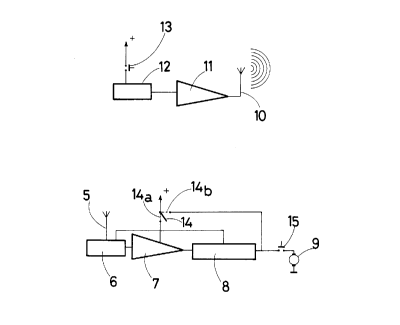Some of the information on this Web page has been provided by external sources. The Government of Canada is not responsible for the accuracy, reliability or currency of the information supplied by external sources. Users wishing to rely upon this information should consult directly with the source of the information. Content provided by external sources is not subject to official languages, privacy and accessibility requirements.
Any discrepancies in the text and image of the Claims and Abstract are due to differing posting times. Text of the Claims and Abstract are posted:
| (12) Patent: | (11) CA 2111285 |
|---|---|
| (54) English Title: | CHILD'S TOY VEHICLE HAVING A SAFETY DEVICE |
| (54) French Title: | VEHICULE JOUET POUR ENFANT MUNI D'UN DISPOSITIF DE SECURITE |
| Status: | Deemed expired |
| (51) International Patent Classification (IPC): |
|
|---|---|
| (72) Inventors : |
|
| (73) Owners : |
|
| (71) Applicants : |
|
| (74) Agent: | SMART & BIGGAR |
| (74) Associate agent: | |
| (45) Issued: | 1997-09-09 |
| (22) Filed Date: | 1993-12-13 |
| (41) Open to Public Inspection: | 1995-06-14 |
| Examination requested: | 1993-12-13 |
| Availability of licence: | N/A |
| (25) Language of filing: | English |
| Patent Cooperation Treaty (PCT): | No |
|---|
| (30) Application Priority Data: | None |
|---|
It comprises a vehicle (1) including a receiver circuit
which may be enabled by the electromagnetic signal
emitted by a remote control (17), handled by an adult,
and a pushbutton (15), in series with the motor (19), to
be depressed by the child driving the vehicle. A switch
(14) breaks the supply to the receiver circuit, disabling
it, at the same time as it makes a bridge across the
power supply and the child operated pushbutton (15).
The invention is applicable to children's toy vehicles
driven by very young children, so that an adult located
remotely can break the motor supply to stop the vehicle
at any given time, for safety purposes.
a présente invention vise un véhicule (1) doté d'un circuit récepteur qui peut être activé par le signal électromagnétique émis par une télécommande (17) manipulée par un adulte, et par un bouton-poussoir (15), monté en série avec le moteur (19), devant être actionné par l'enfant qui conduit le véhicule. Un interrupteur (14) désactive le circuit récepteur en coupant l'alimentation à celui-ci en même temps qu'il crée un pont entre l'alimentation et le bouton-poussoir (15) actionné par l'enfant. L'invention peut s'appliquer à des véhicules de jeu conduits par de très jeunes enfants, un adulte pouvant, à distance, couper l'alimentation du moteur pour arrêter le véhicule à n'importe quel moment, à des fins de sécurité.
Note: Claims are shown in the official language in which they were submitted.
Note: Descriptions are shown in the official language in which they were submitted.

For a clearer understanding of the status of the application/patent presented on this page, the site Disclaimer , as well as the definitions for Patent , Administrative Status , Maintenance Fee and Payment History should be consulted.
| Title | Date |
|---|---|
| Forecasted Issue Date | 1997-09-09 |
| (22) Filed | 1993-12-13 |
| Examination Requested | 1993-12-13 |
| (41) Open to Public Inspection | 1995-06-14 |
| (45) Issued | 1997-09-09 |
| Deemed Expired | 1999-12-13 |
There is no abandonment history.
| Fee Type | Anniversary Year | Due Date | Amount Paid | Paid Date |
|---|---|---|---|---|
| Application Fee | $0.00 | 1993-12-13 | ||
| Maintenance Fee - Application - New Act | 2 | 1995-12-13 | $50.00 | 1995-10-18 |
| Reinstatement: Failure to Pay Application Maintenance Fees | $200.00 | 1996-12-23 | ||
| Maintenance Fee - Application - New Act | 3 | 1996-12-13 | $50.00 | 1996-12-23 |
| Final Fee | $150.00 | 1997-05-12 | ||
| Maintenance Fee - Patent - New Act | 4 | 1997-12-15 | $100.00 | 1997-11-18 |
Note: Records showing the ownership history in alphabetical order.
| Current Owners on Record |
|---|
| RODRIGUEZ-FERRE, JOSE MANUEL |
| Past Owners on Record |
|---|
| None |